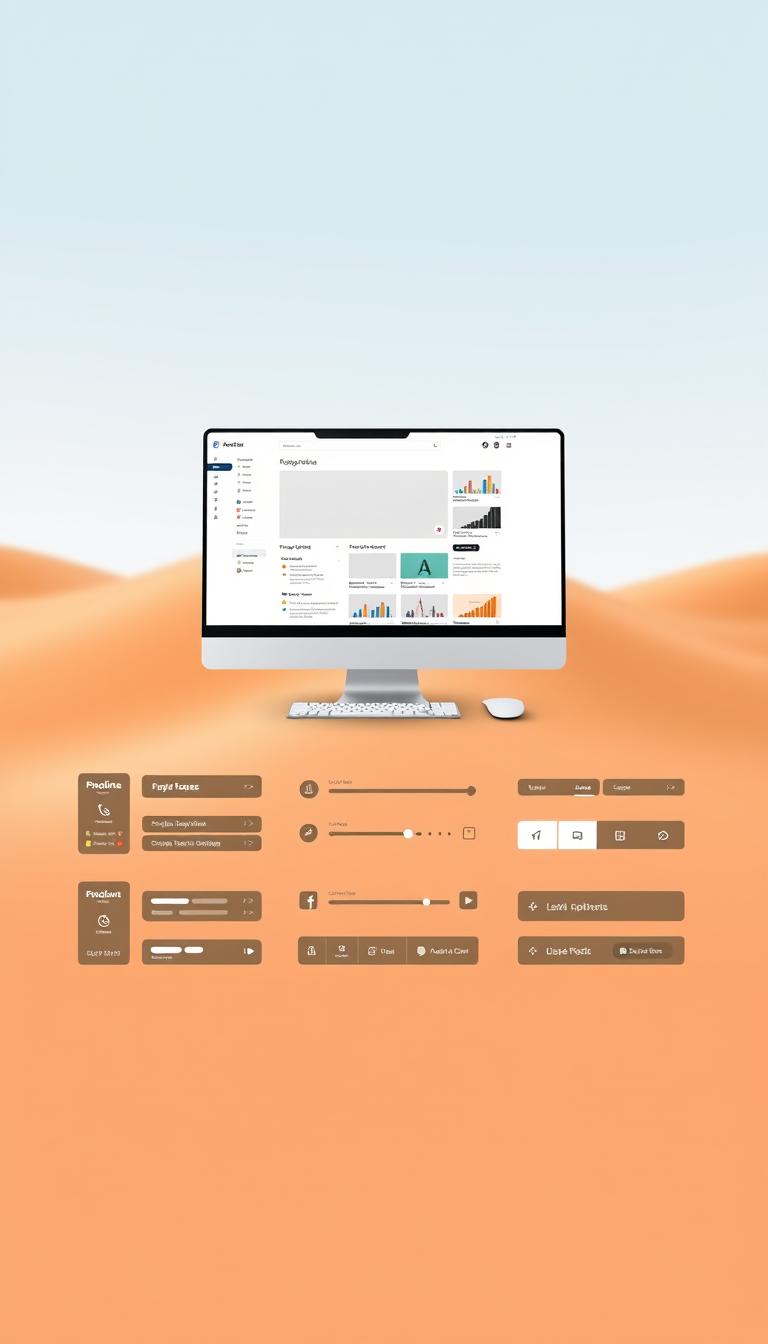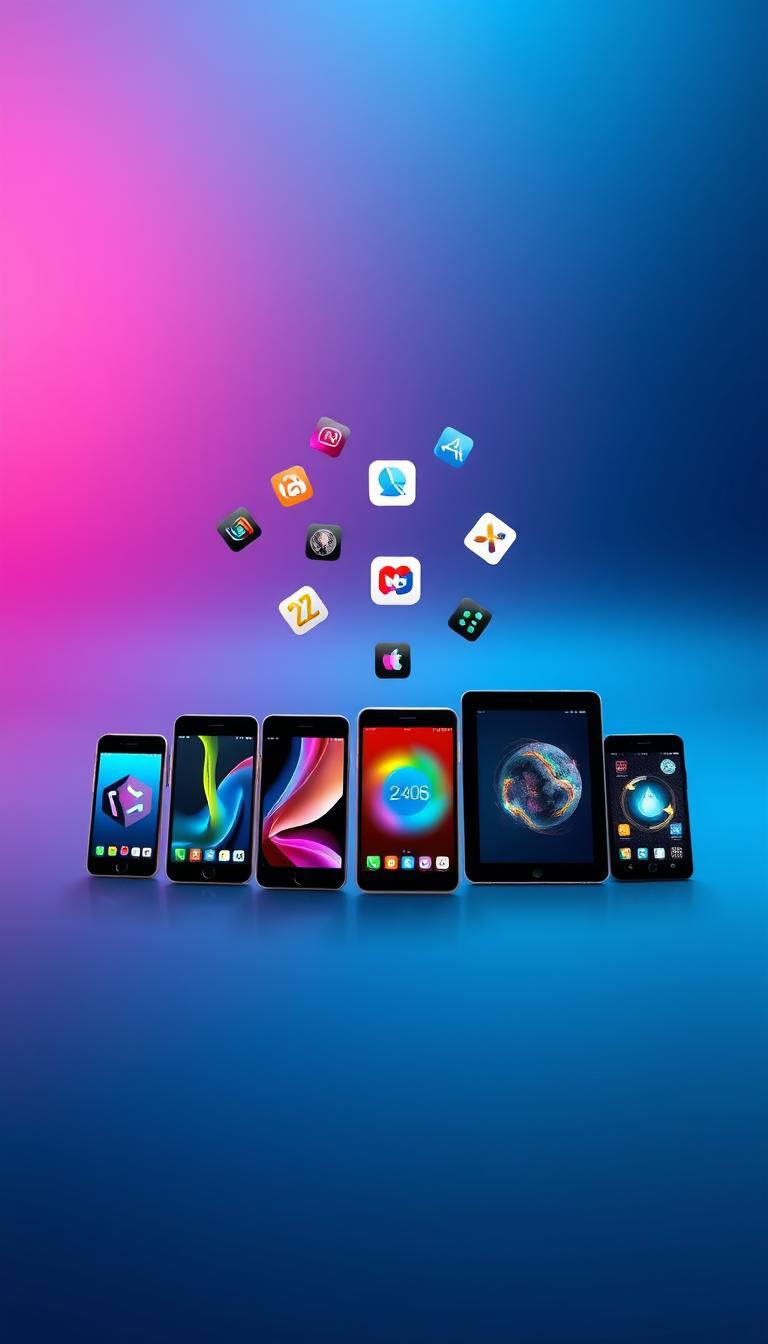
Are you planning a trip abroad this summer? Learning a new language can make your trip better. It lets you explore foreign streets, talk to locals, and dive into new cultures.
Remote travel and global communication have grown a lot. This means more people want to learn new languages. Luckily, many language learning apps are now out there. They make learning a new language easy and fun.
These apps offer a fun and interactive way to learn. They make learning a new language both enjoyable and effective.
Key Takeaways
- Discover the most effective language learning apps for 2023.
- Learn how these apps can enhance your travel experience.
- Explore the features that make these tools stand out.
- Understand the benefits of using language learning apps.
- Get started with learning a new language today.
Introduction to Language Learning Apps
Now, learning a new language is easy with language learning software. The way we learn languages has changed a lot. It’s now more fun and easy for people all over the world.
Why Use Language Learning Apps?
Language learning apps have cool features that make learning fun and effective. They use gamification, interactive exercises, and personalized learning plans. These help you stay excited and see how far you’ve come.
Choosing the best app depends on what you like and how you learn. Yet, many agree that flexibility and convenience are key in language learning.
Benefits of Mobile Learning
One big plus of language learning apps is that you can learn anywhere, anytime. Mobile learning lets you fit in language practice whenever you can. It’s perfect for those with tight schedules.
Mobile learning also offers real-time feedback, interactive conversations, and lots of learning resources. These tools help you improve your language skills better.
Top Language Learning Apps of 2023
2023 has seen a surge in language learning apps. These apps cater to various learning styles and preferences. Let’s dive into some of the top language learning apps that have made a big splash this year.
Duolingo: A Fun and Engaging Approach
Duolingo is known for its fun, game-like approach to learning languages. It has a wide range of interactive lessons that keep users hooked.
Key Features: Gamification, interactive lessons, comprehensive curriculum.
Babbel: Real Conversations and Immersive Learning
Babbel focuses on improving your speaking skills. It offers immersive learning experiences that mimic real conversations. It’s perfect for those who want to get better at speaking.
Key Features: Conversational focus, immersive learning, real-life scenarios.
Rosetta Stone: The Long-Standing Leader
Rosetta Stone is a well-known name in language learning. It offers comprehensive courses with features like speech recognition technology to help with pronunciation.
Key Features: Comprehensive courses, speech recognition technology, structured learning.
Memrise: For Vocabulary and Cultural Insights
Memrise is famous for its user-generated content. It offers a vast array of courses that focus on vocabulary and cultural insights. It’s great for expanding your vocabulary and understanding cultural nuances.
Key Features: User-generated content, vocabulary building, cultural insights.
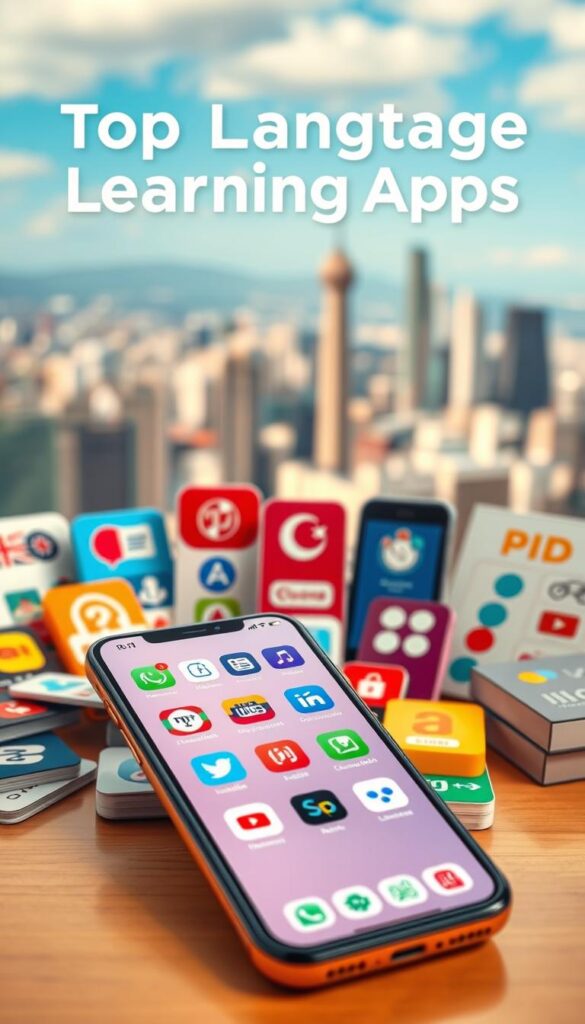
| App | Key Features | Pricing |
|---|---|---|
| Duolingo | Gamification, interactive lessons | Free, with in-app purchases |
| Babbel | Conversational focus, immersive learning | Subscription-based, with a free trial |
| Rosetta Stone | Comprehensive courses, speech recognition | Subscription-based, with various plans |
| Memrise | User-generated content, vocabulary building | Free, with a premium subscription option |
Features to Look For in Language Apps
When picking a language learning app, look for certain key features. A good app makes learning fun and effective.
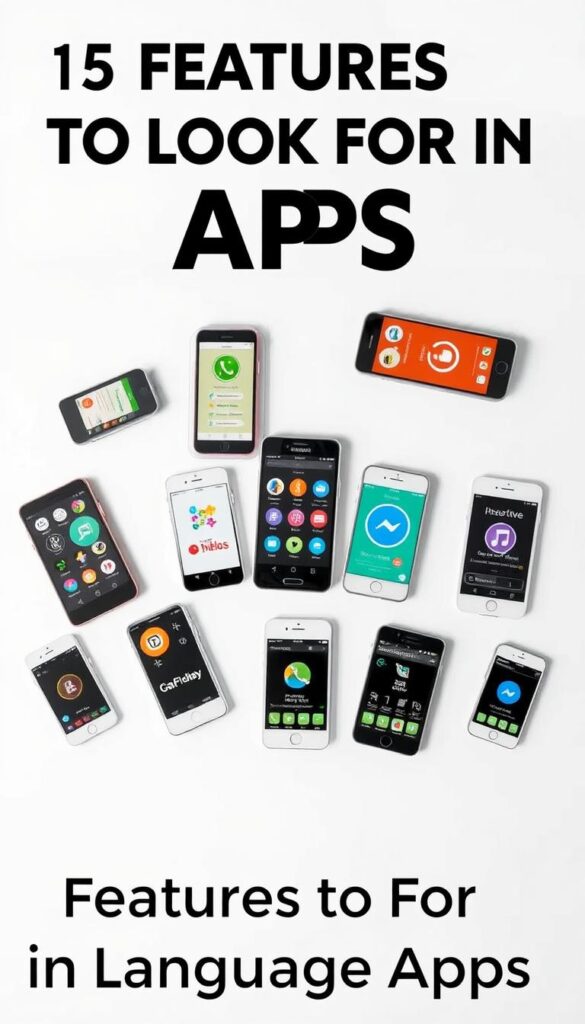
⭐️ Tap the exclusive deal link https://temu.to/k/uot8tcxvwum to score top-quality items at ultra-low prices. 🛍️ These unbeatable deals are only available here. Shop now and save big! ⭐️ Directly get exclusive deal in Temu app here: https://app.temu.com/m/mhb5rstagbx
Another surprise for you! Click https://temu.to/k/uag0bn0o0wd to earn with me together🤝!
User-Friendly Interface
A user-friendly interface is key for a good learning experience. It should be easy to use, so you can move through lessons smoothly.
A great app has a clean look, clear text, and simple navigation. This lets you focus on learning, not figuring out the app.
Variety of Learning Methods
Everyone learns differently. The best language apps offer many ways to learn, like quizzes, games, and exercises.
This variety keeps learning exciting and stops boredom. For example, some apps use games to motivate you, while others focus on talking practice or cultural lessons.
Progress Tracking and Motivation
Tracking your progress is important in language apps. It shows you how far you’ve come and what you need to work on.
Also, progress tracking often includes motivational tools like rewards, badges, or streaks. These features help you stay motivated and keep learning.
By looking at these features, you can pick an app that fits your learning style. This makes learning both productive and fun.
Language Learning on the Go: Offline Options
Mobile learning has grown a lot, making offline language learning key. Many apps now let you study offline. This means you can learn a new language anywhere, anytime.
Courses Available Offline
Look for apps that let you access courses offline. This is great for those who commute or travel a lot. Duolingo, Babbel, and Rosetta Stone are good examples. They let you study offline, even without internet.
Benefits of Offline Learning include:
- Flexibility to learn anywhere
- Reduced data usage
- Ability to learn in areas with poor internet connectivity
Sync Across Devices
Another key feature is syncing progress across devices. You can start a lesson on your phone and finish on your tablet or computer. This is handy for those who use different devices daily.
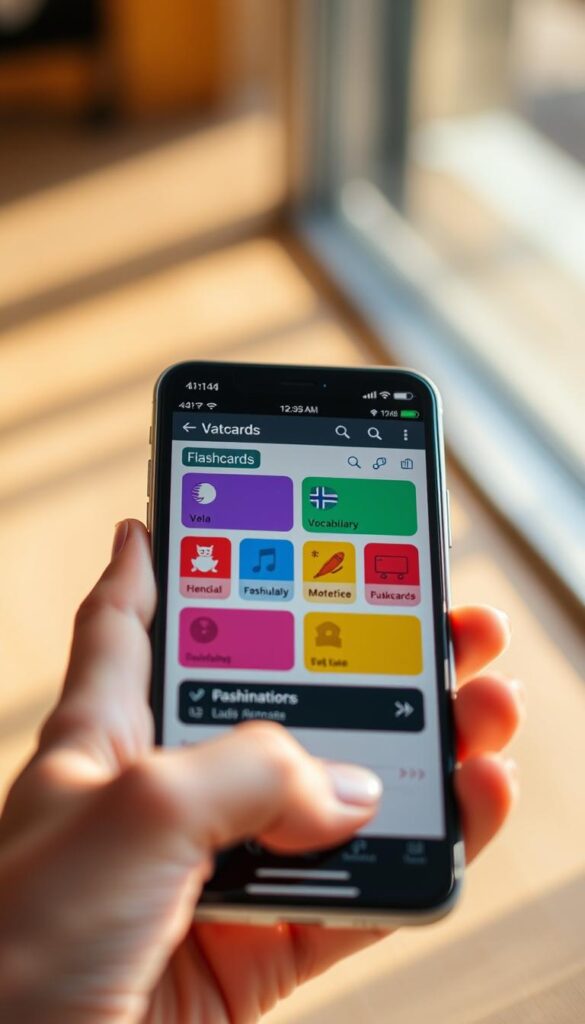
To show how different apps handle offline and syncing, here’s a comparison:
| App | Offline Access | Sync Across Devices |
|---|---|---|
| Duolingo | Yes | Yes |
| Babbel | Yes | Yes |
| Rosetta Stone | Yes | Yes |
When picking a language learning app, think about your needs for offline and syncing. This will help you find the best app for a smooth learning experience.
Language App Pricing: Free vs. Paid
Language learning apps come in free and paid versions. Each has its own set of features and benefits. It’s important for learners to know the differences to choose the right app for their journey.
Free Apps: What to Expect
Free apps like Duolingo are great for beginners. They offer:
- Basic lessons in grammar and vocabulary
- Gamification elements to enhance engagement
- Limited offline functionality
But, free apps have some downsides. They often have ads and don’t offer advanced features or personal support.
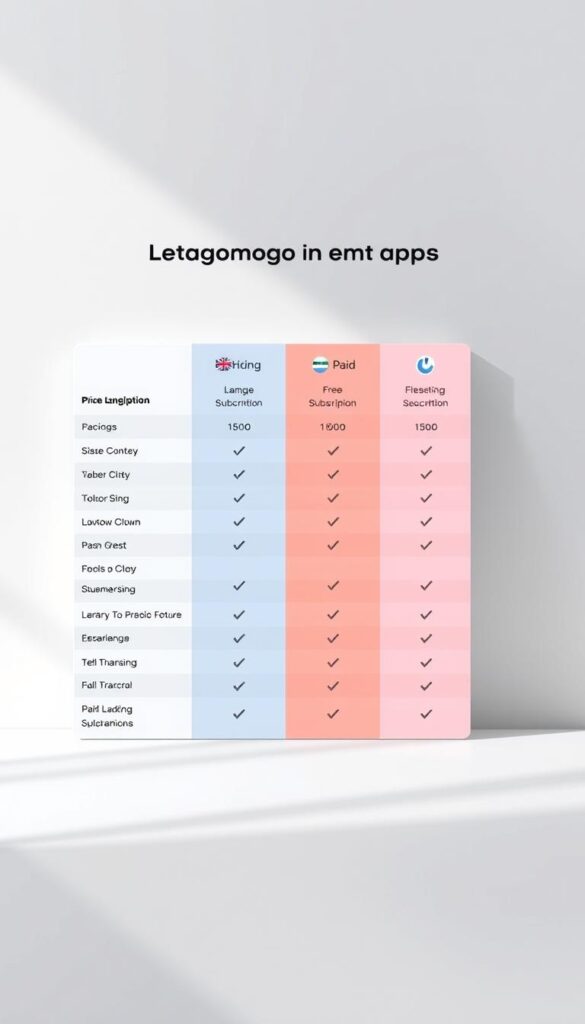
Premium Features Worth the Cost
Paid apps like Babbel and Rosetta Stone provide a deeper learning experience. They offer:
- Ad-free learning environment
- Advanced grammar and vocabulary lessons
- Personalized learning plans and support
- Offline access to all content
These features make learning more effective and structured. While they cost more, many learners find it’s worth it for the quality and progress.
When choosing between free and paid apps, think about your goals, budget, and support needs. The free version might be enough at first. But, if you’re serious about becoming fluent, the premium features might be worth the investment.
Community and Support in Language Learning Apps
Community and support are key in language learning apps. They help learners stay motivated and engaged. Having a community and support system can make a big difference.
Connect with Other Learners
Top-rated language apps often have community features. Users can join forums, language exchange programs, and social media groups. For example, Duolingo has a lively community where users share tips and progress.
Benefits of Community Features:
- Motivation through competition and camaraderie
- Opportunities to practice with native speakers or fellow learners
- Access to user-generated content and tips
As FluentU says, “Learning with others makes it more fun and less lonely.”
Access to Tutors and Native Speakers
Some apps offer more by connecting learners with tutors and native speakers. This can be through tutoring sessions, live chats, or video calls. For instance, Babbel provides live classes with experienced teachers.
| App | Community Features | Tutor/Native Speaker Access |
|---|---|---|
| Duolingo | Discussion forums, language exchange | No |
| Babbel | Live classes, community forums | Yes |
| Rosetta Stone | Community forums, live tutoring | Yes |
“Talking with native speakers and getting feedback from tutors is priceless. It makes learning feel more personal and effective.” – Language learner testimonial
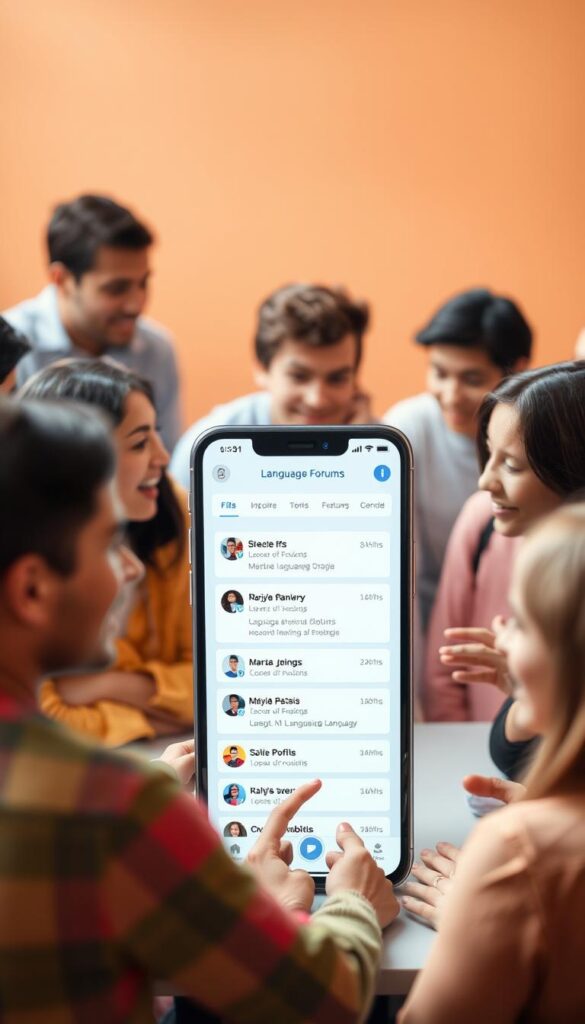
In summary, community and support in language apps are crucial. They connect learners with each other and with native speakers or tutors. This creates a more engaging, motivating, and effective learning space.
Learning Multiple Languages: Best Practices
Nowadays, learning many languages is easier than ever. The secret to success is using the right strategies and the best language apps and language learning software.

Choosing Your Languages Wisely
Picking the right languages to learn is key. Think about what you want to achieve. For example, if you’re into business, Mandarin, Spanish, or Arabic might be good choices.
Also, pick languages from different families. This makes learning fun and boosts your brain. Learning languages like Romance, Germanic, and Asian ones is a good idea.
“The more languages you speak, the more doors you can open, not just in terms of communication, but also in understanding different cultures and perspectives.” –
Managing Time and Resources
Managing your time well is essential when learning many languages. Set aside specific times for each one. Use language learning software to track your progress and stay motivated.
- Set realistic goals for each study session.
- Use apps that offer spaced repetition to optimize memorization.
- Practice active listening and speaking as much as possible.
By following these tips and using the best language apps, you can learn many languages successfully.
Success Stories: Users Who Learned with Apps
Language learning apps have changed lives by helping people become fluent. These apps make learning a language easy and fun. They also let learners share their stories, inspiring others to start their own journey.
Achieving Fluency: A Case Study
A user started with Duolingo to learn Spanish. They went from beginner to advanced in just a year. This was thanks to the app’s interactive and engaging approach.
The user’s hard work and the app’s lessons helped them speak Spanish like a native. This shows how powerful these apps can be.

Testimonials from Diverse Learners
People from all walks of life have found success with language apps. For example, a busy professional learned French with Babbel during their commute. They loved the real-life conversational lessons.
A student praised Rosetta Stone for its immersive learning experience. This helped them understand German better.
- A learner became conversational in Italian with Memrise, thanks to its vast vocabulary and cultural insights.
- Another user mastered Japanese with Duolingo, thanks to its fun approach.
These stories prove that language apps are top language learning tools. They meet different learning needs and create a community of learners.
Conclusion: Choose the Best App for You
There are many language learning apps out there. Finding the right one can be tough. Think about what you like and compare different apps to make a smart choice.
Identify Your Learning Preferences
Think about what you enjoy most – games, conversations, or lessons. Duolingo, Babbel, and Rosetta Stone offer different ways to learn a language.
Compare Language Learning Apps
Look for apps that are easy to use, work offline, and have a community. A good app should match your needs and keep you excited to learn. Do your research to find the perfect app for you.
Choosing the right app is the first step to learning a new language. Whether you’re starting out or already know a bit, pick an app that fits your learning style. This will help you stay interested and motivated.
